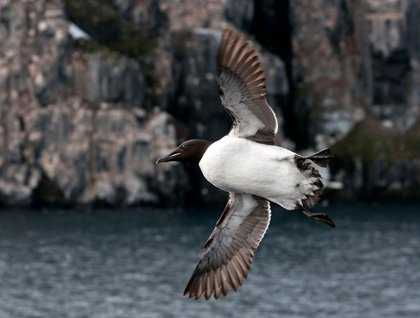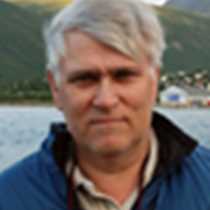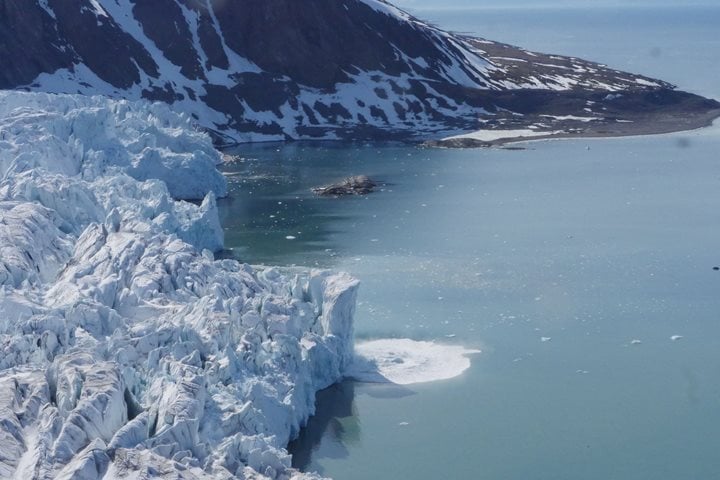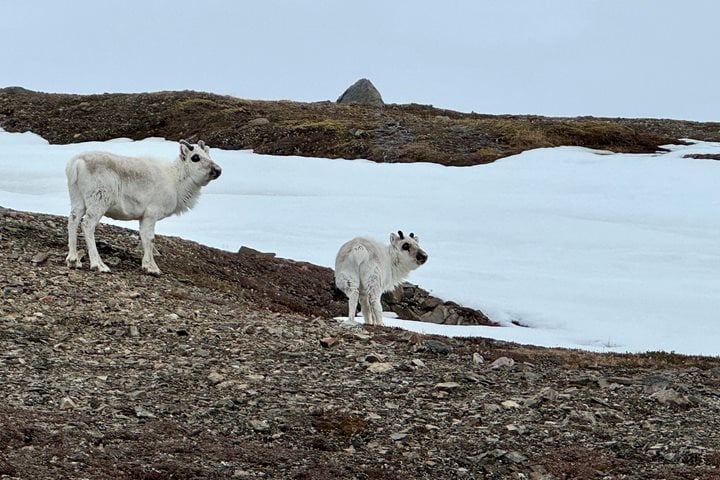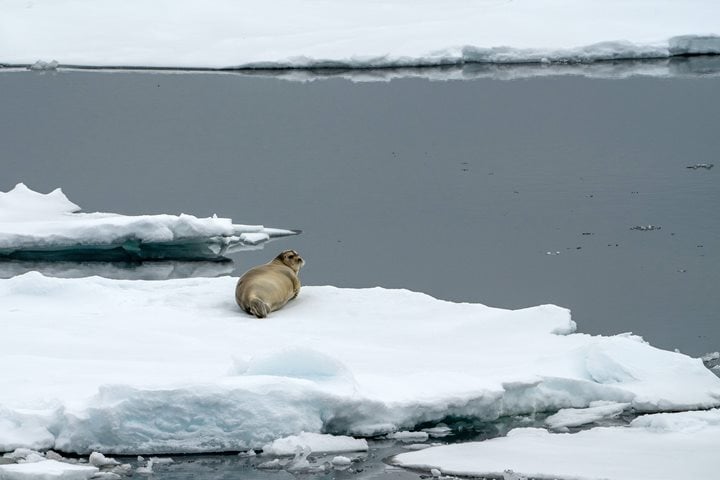Through the “night,” although this term cannot really be applied here in the high latitudes with midnight sun for almost four months, the ship sailed from Storfjord and through Fremansundet into the colder waters of Olgastretet. Before breakfast the early risers ran up to the bridge or out on deck, as our expedition leader announced a female polar bear with coys (cubs of the year). She was out on the fast ice but slowly made her way inland at Kapp Freeden.
This is a day allocated for expedition and to be flexible is the key. We sailed for Wahlbergøya only to find an empty beach and instead set the heading for Alkefjellet farther north along the Hinlopen Strait. Before lunch we were able to enjoy a magnificent scene with Brünnich’s guillemots (thick-billed murres) breeding along the cliff wall. How many? Hard to tell but birds were cluttered along the cliff ledges, and in the water thousands were swimming along. Also, as the ship came closer swarms of birds were flying into the colony or out to sea to search for their main prey, polar cod along the ice edges.
Seabirds are adapted to a life out in the ocean, so very different from us very terrestrial species. The only reason for them to come ashore is that none of them have been able to find a way to breed out at sea. Thick-billed murres belong to the order Alcidae (auks) and very much occupy the same niche as penguins in the Southern Ocean but are not related. Most important, the auks have adjusted to maintain flying in the air but also do fly, as penguins do, under the water, using their wings. Here in the northern latitudes (North Atlantic & Pacific) you find the auks with several species, but they all have to deal with land predators, a good reason to be able to fly up to an inaccessible cliff ledge to avoid predation of the egg or chicks. At first as you see them take off they seem to be clumsy but as soon as they are up in the air space they flap their wings like a bumblebee and make good speed. Landing is maybe not so gracious, but still they manage to land on narrow cliff ledges.
During lunch we sailed around the corner into Lomfjord and found a perfect spot, Faksevågen, to do some leg stretching and explore along the beachfront. Soon everybody who wanted to explore the harsh landscape went ashore and was maybe surprised to find lots of life—reindeer, birds (sanderling, ringed plover, brent goose), and some of the most extreme Arctic plants.
Those not keen on a shore outing went out to explore the landscape by Zodiac and a few were rewarded with a brief sighting of walrus. Soon it was time to embark the ship for the evening Recap followed with a nice dinner. Perfect timing as the Arctic fog closed over us but as we left dinner it was bright clear and we were surrounded by ice sheets drifting in Hinlopen. Now we are really going to challenge everything and have set the heading to the very far northeast corner of Svalbard, east of Nordaustlandet. Hopefully by breakfast tomorrow we will be beyond latitude N80o, less than 600 nautical miles from the North Pole.

